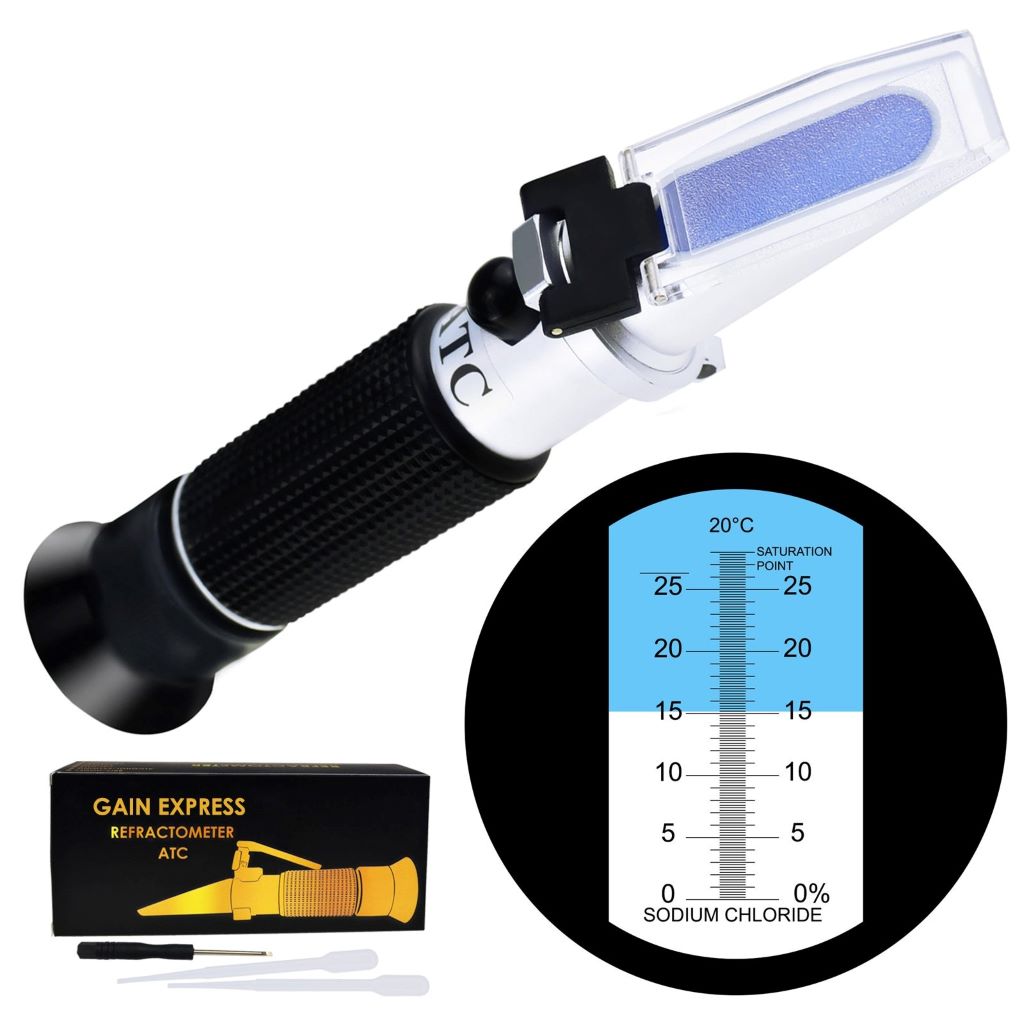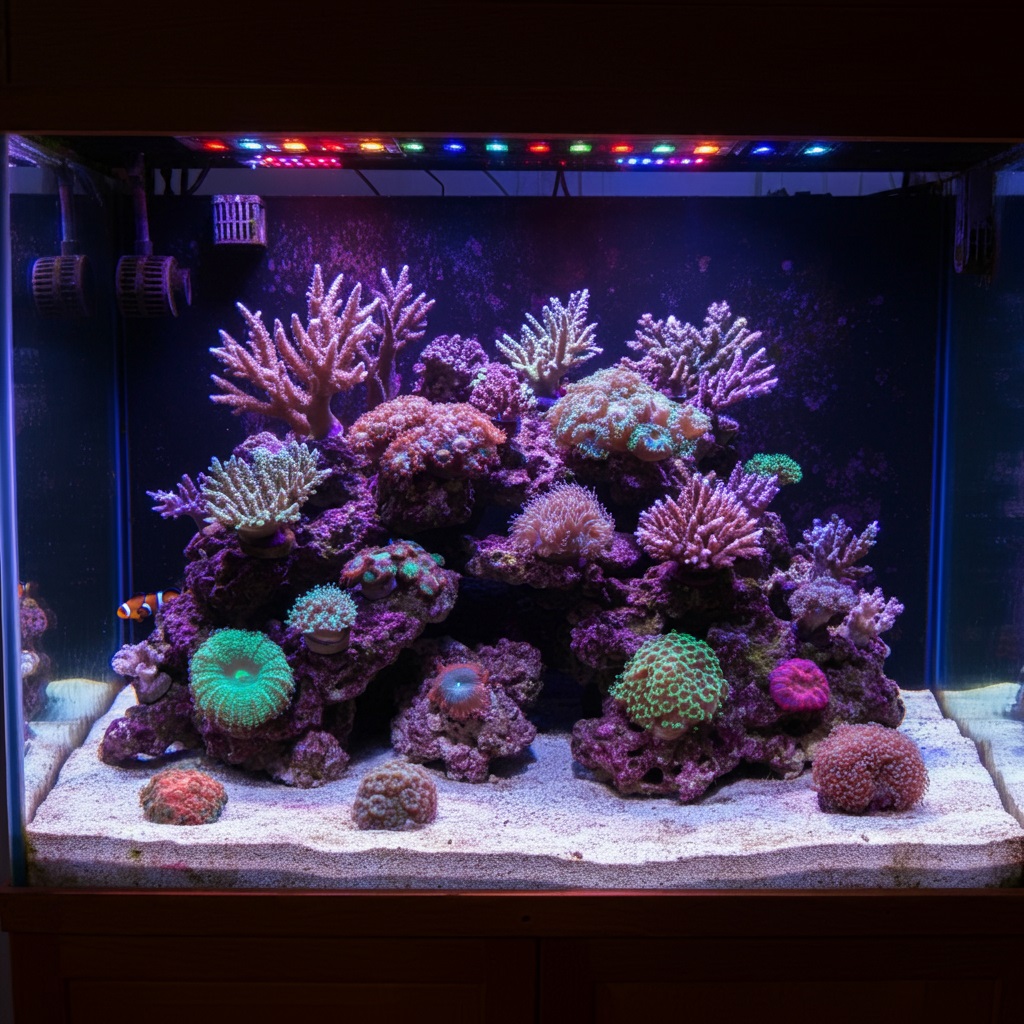Maintaining the proper salinity level in a saltwater aquarium is crucial for the health and well-being of its inhabitants. Saltwater fish and invertebrates have evolved to thrive in a specific range of salinity, and deviations from this range can cause stress, illness, and even death. When monitoring salinity, aquarists often consider tools like a salinity refractometer vs. test strips , each offering different levels of accuracy and convenience to ensure the aquarium’s conditions remain stable and suitable for marine life.
To measure salinity, aquarists have two primary tools at their disposal: refractometers and test strips. While both aim to achieve the same goal, they differ significantly in accuracy, ease of use, and price. This comprehensive guide delves deep into the world of salinity measurement, comparing refractometers and test strips, highlighting their pros and cons, and providing expert reviews to help you make an informed decision.
Understanding Salinity
Before we dive into the specifics of each measuring tool, let’s first understand what salinity is and why it’s so vital for a thriving saltwater aquarium.
Salinity refers to the amount of dissolved salts in a body of water. In the context of aquariums, it’s typically measured in parts per thousand (ppt), which represents the number of grams of salt per kilogram of water. Natural seawater has a salinity of around 35 ppt, and most saltwater aquariums aim to maintain a salinity level within the range of 30-35 ppt.
Maintaining the correct salinity is essential for several reasons:
- Osmosis and Osmoregulation: Fish and invertebrates regulate their internal water balance through osmosis, the movement of water across a semi-permeable membrane from an area of low solute concentration to an area of high solute concentration. 1 In a saltwater environment, fish are constantly losing water to their surroundings due to osmosis. To compensate, they drink seawater and excrete excess salt through their gills. If the salinity is too high or too low, this delicate balance is disrupted, leading to stress and health problems.
- Biological Processes: Many biological processes in marine organisms, such as respiration, metabolism, and reproduction, are sensitive to salinity changes. Deviations from the optimal range can impair these processes and affect the overall health of the aquarium inhabitants.
- Water Chemistry: Salinity influences various water chemistry parameters, such as pH, alkalinity, and calcium levels, which are crucial for maintaining a stable and healthy aquarium environment.
Salinity Refractometers: Precision Measurement for the Serious Aquarist
A refractometer is a precision optical instrument that measures the refractive index of a liquid. The refractive index is a measure of how much light bends when passing through a substance. Since the refractive index of saltwater is directly proportional to its salinity, a refractometer can provide an accurate measurement of the salt concentration in your aquarium.
How Refractometers Work
Refractometers work based on the principle of refraction. When light passes from one medium to another, it changes direction. The amount of bending, or refraction, depends on the density of the two media. In the case of a salinity refractometer, a small sample of aquarium water is placed on the prism. Light passes through the prism and the water sample, and the degree of bending is measured. The scale on the refractometer is calibrated to display the corresponding salinity level.
Types of Refractometers
There are two main types of refractometers used in aquariums:
- Traditional Refractometers: These are the most common type and require manual calibration with distilled water. They are typically less expensive than digital refractometers.
- Digital Refractometers: These offer automatic temperature compensation and digital readings, making them more convenient and user-friendly. They tend to be more expensive than traditional refractometers.
Pros of Using a Refractometer
- Accuracy: Refractometers are generally more accurate than test strips, providing precise salinity measurements.
- Durability: Refractometers are made of durable materials and can last for many years with proper care.
- Ease of Use: While traditional refractometers require manual calibration, the process is straightforward. Digital refractometers are even easier to use, with automatic temperature compensation and digital readings.
Cons of Using a Refractometer
- Cost: Refractometers can be more expensive than test strips, especially digital models.
- Calibration: Traditional refractometers require regular calibration to ensure accuracy.
- Fragility: The prism in a refractometer is delicate and can be easily damaged if dropped.
Salinity Test Strips: Quick and Easy, But Less Accurate

Salinity test strips offer a quick and convenient way to estimate the salinity level in your aquarium. They are typically made of plastic strips with a small pad containing a chemical reagent that changes color based on the salt concentration in the water.
How Test Strips Work
To use a test strip, you simply dip it into the aquarium water for a few seconds and then compare the color of the pad to a color chart provided by the manufacturer. The color chart indicates the corresponding salinity level.
Pros of Using Test Strips
- Convenience: Test strips are very easy to use and require no calibration.
- Portability: Test strips are small and portable, making them ideal for field use or testing multiple tanks.
- Cost-Effective: Test strips are generally less expensive than refractometers.
Cons of Using Test Strips
- Accuracy: Test strips are less accurate than refractometers and can be affected by factors such as lighting and water clarity.
- Limited Range: Test strips typically have a limited measurement range, which may not be suitable for all aquariums.
- Single-Use: Test strips are disposable and can only be used once.
Refractometer vs. Test Strips: Which is Right for You?
The choice between a refractometer and test strips depends on your individual needs and priorities. If accuracy is paramount, a refractometer is the clear winner. However, if convenience and affordability are more important, test strips may be a suitable option.
Consider the following factors when making your decision:
- Budget: Refractometers are generally more expensive than test strips.
- Accuracy Requirements: If you need precise salinity measurements, a refractometer is essential.
- Frequency of Testing: If you test your aquarium water frequently, the cost of disposable test strips can add up.
- Technical Expertise: Traditional refractometers require some technical expertise for calibration, while digital refractometers and test strips are more user-friendly.
Expert Reviews and Recommendations
Here are some reviews and recommendations from experienced aquarists and industry experts:
- Reef Central: “A refractometer is a must-have tool for any serious saltwater aquarist. It’s the most accurate way to measure salinity, and it’s a worthwhile investment for the long-term health of your tank.”
- Bulk Reef Supply: “Test strips can be a good option for quick checks and casual hobbyists, but for critical applications, a refractometer is the way to go.”
- Marine Depot: “Digital refractometers offer the ultimate combination of accuracy and convenience, but they come at a higher price point.”
Accurate Nitrate Testing in Brackish Aquariums: A Comprehensive Guide
Popular FAQs
Q: How often should I test the salinity in my aquarium?
A: It’s recommended to test your aquarium’s salinity at least once a week, and more frequently when making water changes or adding new livestock.
Q: How do I calibrate a refractometer?
A: To calibrate a traditional refractometer, you’ll need distilled water. Place a few drops of distilled water on the prism and adjust the calibration screw until the reading matches zero.
Q: Can I use tap water to calibrate my refractometer?
A: No, tap water contains dissolved minerals that can affect the accuracy of the calibration. Always use distilled water for calibration.
Q: How do I store my refractometer?
A: Store your refractometer in a clean, dry place away from direct sunlight and extreme temperatures.
Q: What should I do if my salinity is too high or too low?
A: If your salinity is too high, you can perform a partial water change with freshwater. If your salinity is too low, you can add saltwater gradually until the desired level is reached.
Conclusion
Choosing the right salinity measurement tool is essential for maintaining a healthy and thriving saltwater aquarium. Refractometers offer superior accuracy and durability, while test strips provide convenience and affordability. By carefully considering your needs and priorities, you can select the tool that best suits your aquarium setup and ensures the well-being of your aquatic companions.
Remember, regular monitoring and maintenance of proper salinity levels are crucial for the long-term success of your saltwater aquarium. With the right tools and knowledge, you can create a stable and thriving environment for your fish and invertebrates to flourish.
Read More:
How to Cycle a Quarantine Tank Quickly and Safely




